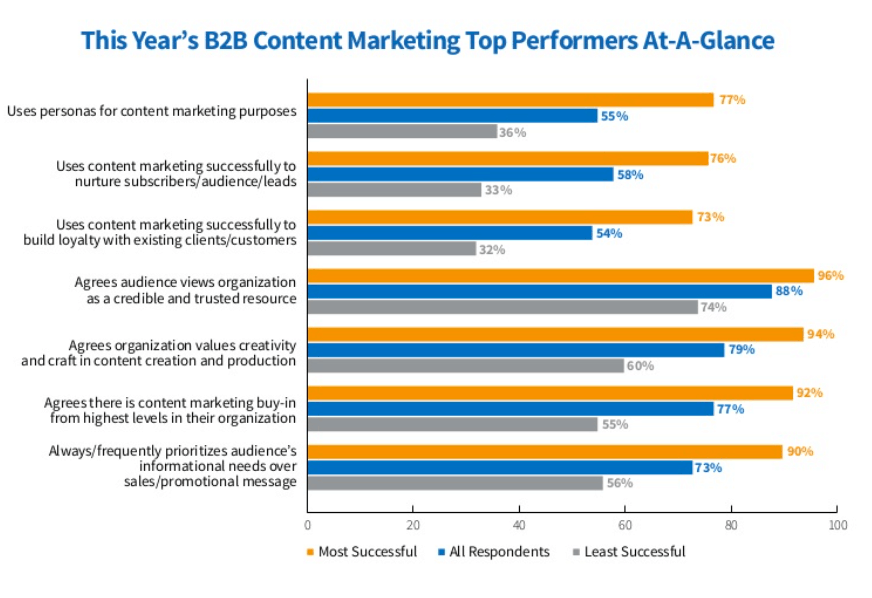
“How often should brands be distributing their content to ensure relevance continuity?”
How frequently should brands be distributing content to ensure continuity?
A marketer at Humana asked this question, one of the Top 100 Questions on content marketing.
The answer: it depends on your audience’s information habits. That said, the tips below will help you maximize audience engagement with content, whatever its frequency.
Put audience needs first
Know your buyers and especially their information habits.
The most successful content prioritizes the audience’s needs ahead of the company’s and brand’s promotional needs, Content Marketing Institute research has found.

Set a regular cadence for your content. Make a date with your readers.
Always deliver content when it’s expected – the same way you expect broadcast news to start on time.
Prioritize quality over frequency
The most successful blogs have high frequency, as Andy Crestodina’s 2020 blog research found.

The problem is that a daily or weekly blog may prove too fast a pace for your brand or team to sustain. For a reader, what matters most is that your content is high quality – relevant, on topic, and truly useful.
If you have the resources to maintain both high quality and high frequency, go for it!
Quality matters more than frequency
If you’re struggling to select the right frequency, it’s better to start slower and speed up later on than to come out of the gate fast and fade away.
Test how much content you can reasonably generate by populating an editorial calendar that goes out at least 12 months into the future. If you don’t have enough ideas to fill a calendar, lower the frequency.
Whatever frequency you choose, make sure you can sustain it with existing resources – people and budget. Too many content projects, even potentially great ones, launch with a big head of steam and tail off prematurely before they get enough time to succeed.
What frequency fits you?
Here are 6 tips to get insights on your buyers’ desired content frequency:
- Survey your audience to ask them what kinds of information they want, how often they want it, and where to put it. The best marketers ask audiences to choose the frequency of content, as Emma does in a survey question below.

- Review your website, email, and marketing analytics to figure out which existing content already resonates best with your audience. Then focus on creating and curating more content on the most winning topics.
- Perform buyer persona research to gain insights from the real words of real buyers. You’ll learn which content buyers want most and where they go to find it.
- Use email testing to determine the ideal email frequency for your list.
- Use best practices to determine social media posting frequency.
- Dig deep to find out what content audiences crave most. Gather buyers’ questions from emails, chat, and customer service, then do a text analysis to turn these questions into topic ideas for compelling content. Here’s how.
Map content to the buyers’ journey
Based on your buyers’ questions and searches, you can determine which stage of the journey each is in. Then you can segment your audience and map your content for each stage in the buyers’ journey.
With segmentation by buyer journey stage, you will be able to share content that’s even more salient to your audience.
Why? Because content for each journey stage helps buyers overcome the different types of obstacles they will encounter during a buying journey.
In other words, the right content at the right time helps you close the deal.
“How often should brands be distributing their content to ensure relevance continuity?” is one of the Top 100 Questions on content marketing. Find the answers here.

